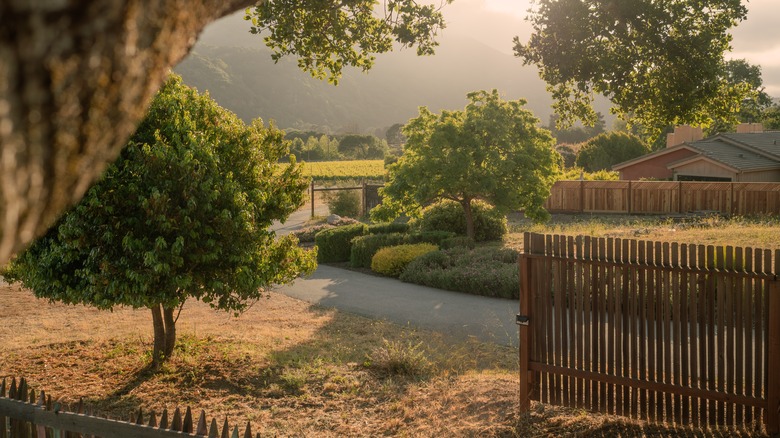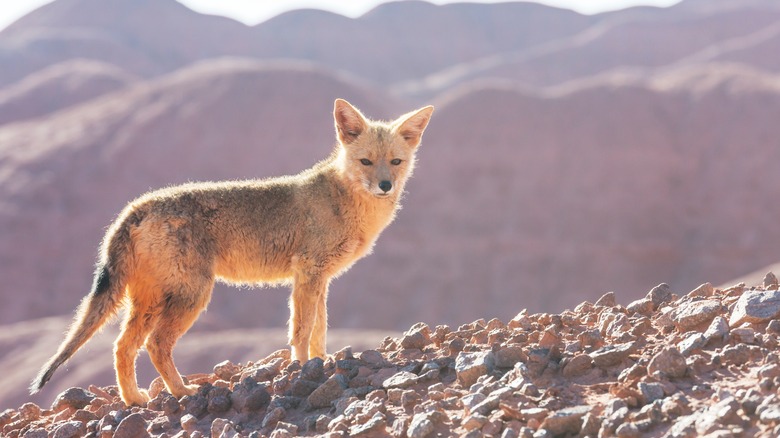The Predator That's Thriving In California - And What It Says About The Ecosystem
They're quick, quiet, and barely leave a trace. At just around 10 pounds, gray foxes are small enough to slip under the radar, but their impact on California's landscapes is outsized. These nocturnal predators are thriving across the state, and that's good news. Far from being a threat, gray foxes are an important part of the ecosystem; they shape the balance of plants, prey, and other wildlife around them. What makes them stand out is how easily they move between wild spaces and developed ones. When the gray fox is thriving (without over-populating), it's a sign of a healthy food chain.
They've been spotted slipping through alleys, crossing campuses, and quietly passing through neighborhoods. Most of the time, they go unnoticed, but their presence raises the question of how people and foxes share the same spaces. For homeowners, even small steps, such as building a fence to mark boundaries, can make that coexistence more manageable, while still leaving foxes free to play their role in the ecosystem.
Why gray foxes matter
Gray foxes are the balancing force in their ecosystems. This is because they have an impressively flexible diet. They hunt squirrels, rabbits, and rodents. And they can even raid bird nests for eggs because of their unusual ability to climb trees. They'll also eat fruits, crops like corn and peanuts, and the occasional insect, which means they're as comfortable in orchards and fields as they are in woodlands. This adaptability makes them regulators within their environment. By keeping rodent numbers in check, gray foxes help prevent damage to crops and reduce the spread of disease.
Their feeding also stops vegetation from overgrowing, keeping plant communities healthier and more diverse. But gray foxes don't just take. They're an important food source for larger predators, like golden eagles, bobcats, and coyotes. This way, they're in the middle of the food web, connecting smaller prey species to top predators. They even shape ecosystems in more subtle ways. Gray foxes host a wide range of parasites, from fleas and ticks to internal worms, which may sound unpleasant but actually plays into the larger web of species interactions. And while their role in the wild is essential, it's easy to see why some homeowners think about banishing foxes from their yard when these adaptable predators wander a little too close.
The boom-and-bust cycle of gray foxes
Wildlife populations rarely stay steady, and gray foxes are no exception. Donna Burt, the executive director of the Stanislaus Wildlife Care Center, put it simply: "A lot of wildlife populations have boom and bust cycles. When prey animals have good years, the predators reproduce successfully. Then the prey animals decrease, and the predators decrease. They go up and down as a normal cycle." (via SFGATE) These cycles don't just play out in the wild.
Amber Sprock, spokesperson for California State Parks' Central Valley District, pointed out that foxes are being increasingly spotted in cities. "With continued development and climate change reducing their resources, they may start venturing further into developed areas over time." (via Modesto Bee)
Gray foxes have been spotted in university campuses, in overgrown alleys, and in public parks. Doug Bell, wildlife manager for the East Bay Regional Park District, added some local context when speaking to Oakland Magazine, noting that one factor this year for the increase may be a response to the availability of water after years of drought. In other words, more resources can encourage foxes to expand their range into nearby neighborhoods. For homeowners, that means knowing how to keep foxes out of your yard.


